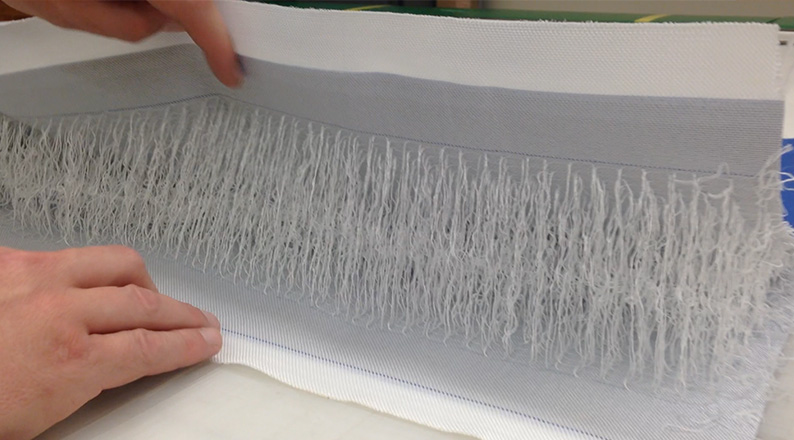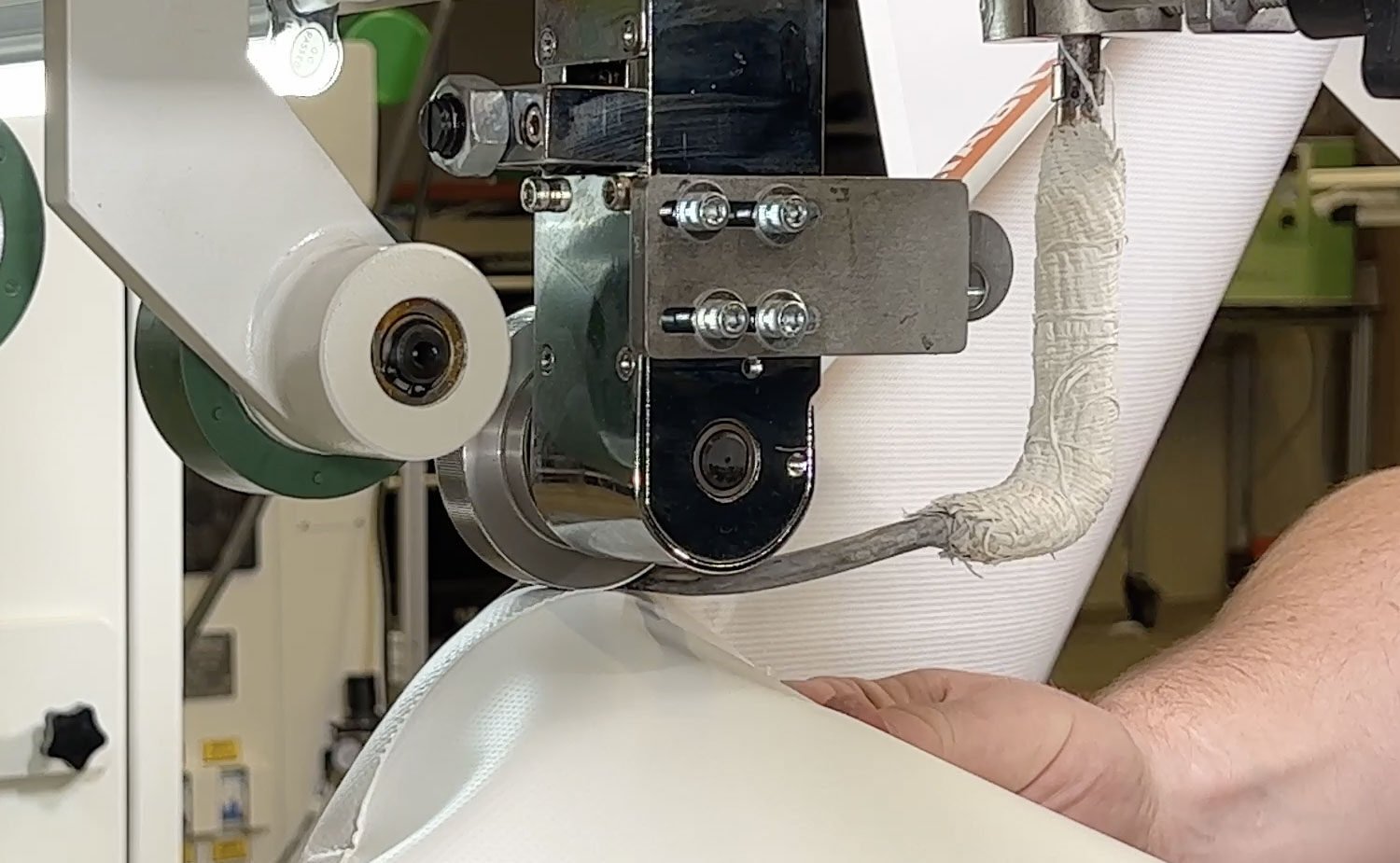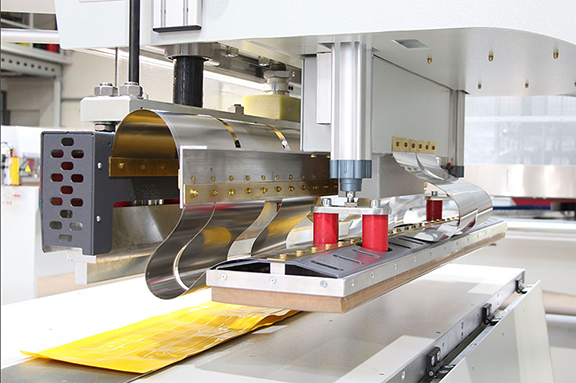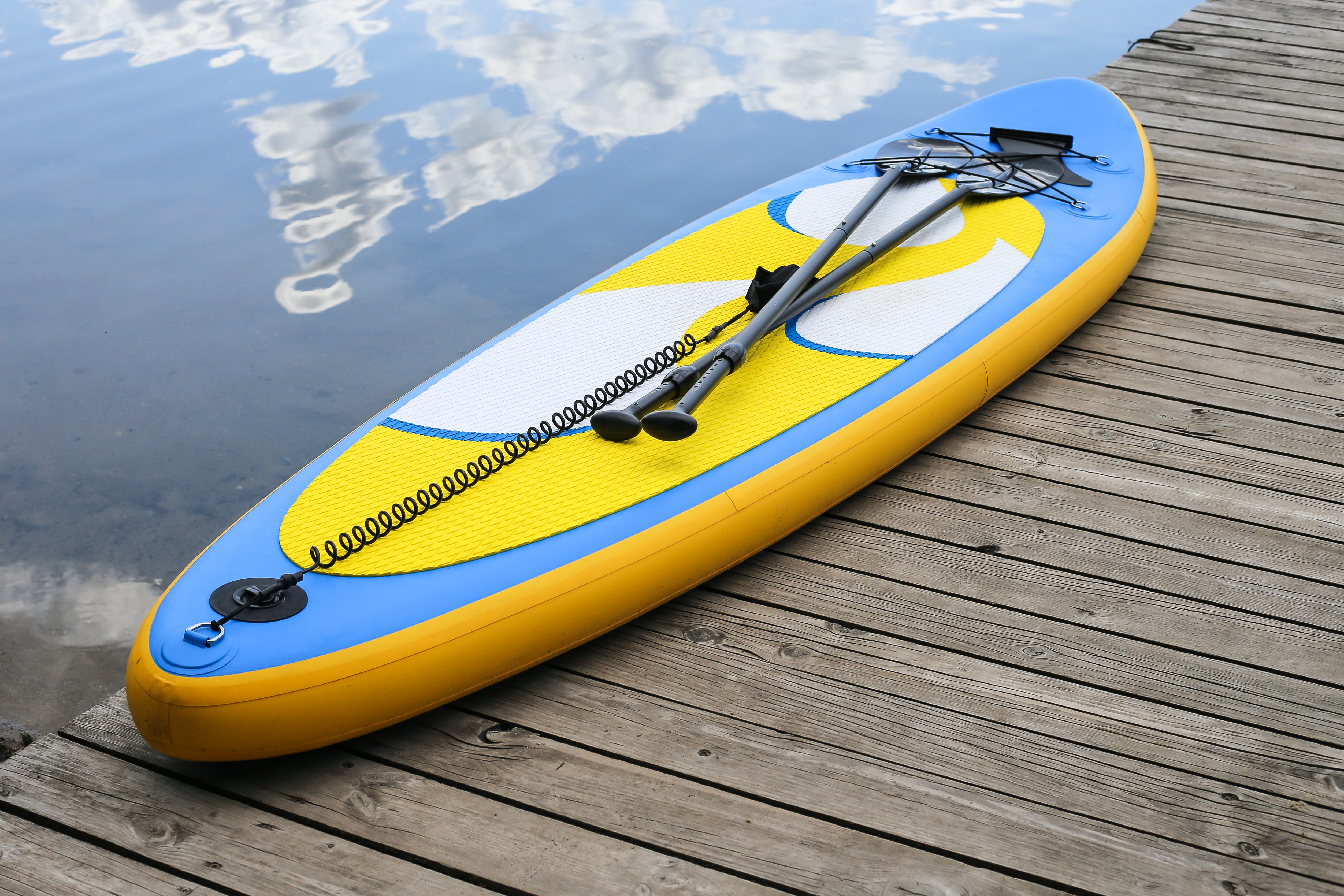In industrial fabric applications, seam integrity is crucial. This is especially true for double wall fabrics, which are extensively used in industries that demand robust, airtight, and durable structures such as inflatable boats, military shelters, and various airtight applications. The T300 Curve, a sophisticated piece of engineering from Miller Weldmaster, stands out as a transformative solution for these needs. This blog delves into the significance of seam strength and explores how the T300 Curve revolutionizes the welding of double wall fabrics to create seams that are not only strong but also durable and airtight. Learn more about the T300 Extreme Curve.
Why Double Wall Fabric Seam Strength Matters
Double wall fabric, also known as drop-stitch fabric, is crucial for applications where structural integrity and air or water retention are necessary. The base fabric, often made from high tensile polyester or other durable materials, provides the foundational strength and versatility needed for these applications. The strength of the seams in these fabrics is vital as it directly impacts the overall durability and reliability of the final product. Weak seams can lead to air leaks, seam failure under pressure, and rapid material degradation, which are significant concerns in products such as high-pressure inflatables and industrial containment systems.
The Science Behind Seam Strength in Double Wall Fabrics
Seam strength in double wall fabrics hinges on the effectiveness of the welding technology employed. Techniques like hot air welding, heat sealing, and pressure bonding are instrumental. Coating PVC enhances the durability and performance of the seams by providing waterproof, anti-mildew, and anti-aging properties. These processes involve using precise heat and controlled pressure to fuse materials, typically robust synthetics like PVC or TPU, ensuring the seams are as strong as the surrounding material. Uniform heat application and precise seam bonding are critical to achieving long-term performance and reliability.
Common Causes of Weak Seams and How to Prevent Them
Several factors can undermine the strength of welded seams in double wall fabrics. Pile yarns contribute to the structural integrity of double wall fabrics by connecting two layers of base fabric, and their proper alignment is crucial for strong seams. Inconsistencies in weld temperature, misalignment of the material, and inadequate pressure during the welding process are common culprits. Utilizing advanced welding machines like the T300 Curve, which is engineered to maintain consistent temperature and pressure, helps prevent these issues. Proper machine settings and operation techniques are also crucial for achieving optimal results.
How the T300 Curve Improves Double Wall Fabric Welding
The T300 Curve is specifically designed for welding double wall fabrics, equipped with advanced hot air welding technology that ensures superior seam strength and durability. This machine helps maintain the desired shape of the welded double wall fabrics, ensuring they can hold their structure under pressure.
Advanced Hot Air Welding Technology for Maximum Seam Strength
This machine features automated heat control and consistent pressure application, crucial for creating strong, airtight seams. The base cloth, often made from polyester and coated with PVC, provides the foundational strength and durability required for effective welding. The precision nozzle design allows for exact placement of heat, reducing the risk of weak spots or material damage, which is essential for maintaining the integrity of double wall fabrics.

Precision Welding for Airtight and Durable Seams
The guided system of the T300 Curve ensures that each seam is welded uniformly, producing straight and strong seams that are crucial for inflatable structures and other air-holding applications. Maintaining a consistent surface shape is crucial for the integrity of the welded seams, as it ensures uniformity and stability. Precision in the welding process not only enhances the strength but also the overall durability of the product.
Efficiency and Productivity Gains with the T300 Extreme Curve
Automation and intuitive controls on the T300 Curve significantly improve the efficiency of the welding process. Advanced seam tracking capabilities minimize manual errors and rework, leading to faster production times and lower operational costs.
Best Practices for Welding Double Wall Fabrics with the T300 Extreme Curve
For operators using the T300 Curve, there are several best practices that can enhance the welding outcome.
Optimizing Heat and Pressure Maximum Durability
Setting the correct temperature and pressure for different types of double wall fabrics is key. The T300 Curve allows for fine-tuning of these parameters, ensuring that each seam is bonded properly to withstand pressure and wear over time.
Ensuring Consistent and Uniform Seams
Proper alignment of materials prior to welding is crucial. The T300 Extreme Curve's design facilitates precise material handling, helping operators maintain consistency across multiple welds and reduce the occurrence of defects.
Real-World Applications: Industries That Benefit from Strong Double Wall Seams
Industries ranging from marine to medical benefit immensely from the enhanced seam strength provided by the T300 Curve. Paddle boards, for instance, benefit from the strong double wall fabric seams, ensuring durability and watertight integrity. Inflatable boats, emergency medical shelters, and industrial containment systems are just a few examples where reliable seam welding is non-negotiable.
Case Studies and Success Stories
Many businesses have reported improved product performance and efficiency after integrating the T300 Curve into their production lines. These case studies often highlight significant reductions in defect rates and enhancements in production speed, thanks to the superior seam strength achieved with this machine.
By understanding the technology behind the T300 Extreme Curve and adhering to best practices in double wall fabric welding, manufacturers can significantly improve the strength, durability, and integrity of their products. The T300 Extreme Curve not only meets but exceeds industry standards for seam welding, setting a new benchmark in the field.
Frequently Asked Questions About Double Wall Fabric Seam Strength and Welding
What is double wall fabric, and why is seam strength important?
Double wall fabric, also known as drop-stitch fabric, consists of two layers of fabric joined together by thousands of fine threads. Different construction techniques can create other surface shapes, enhancing the versatility and customization of double wall fabrics. This unique structure allows the fabric to be inflated to high pressures, providing significant structural rigidity. Seam strength is crucial in these applications because it ensures the integrity and durability of the inflated structure. Strong seams prevent air leaks, maintain shape under pressure, and extend the lifespan of the product.
What welding techniques are best for double wall fabric?
Three primary welding techniques are used for double wall fabric: hot air welding and RF (radio frequency) welding. Different surface shapes can be achieved through these welding techniques, enhancing the functionality and aesthetic appeal of the final product. Hot air welding is highly efficient for achieving strong, durable seams and is suitable for materials like PVC and TPU. RF welding is best for uniform thickness and provides excellent seam integrity but can be more costly.
How does the T300 Curve improve seam durability?
The T300 Curve enhances seam durability through its precision-controlled hot air welding technology. Features such as automated temperature control, consistent pressure application, and customizable welding speeds ensure that the seams are not only airtight but also uniformly bonded across their entire length. This reduces the risk of weak points that could lead to seam failure under stress.
What are the most common issues with double wall fabric seams?
The most common issues with double wall fabric seams include leaks, weak bonding, and uneven welds. These problems typically arise from improper temperature settings, uneven pressure during welding, or misalignment of the fabric layers. Troubleshooting tips include checking and adjusting the machine's temperature and pressure settings regularly, ensuring material alignment before welding, and performing routine maintenance checks on the welding equipment.
Can the T300 Curve weld different types of double wall fabrics?
Yes, the T300 Curve is capable of welding various types of double wall fabrics, including PVC and TPU. Its adjustable settings allow operators to fine-tune the heat, speed, and pressure to match the specific requirements of different fabric types, ensuring optimal seam quality and durability across a wide range of materials.
What industries benefit the most from strong double wall fabric seams?
Industries that benefit most from strong double wall fabric seams include military, medical, inflatable products, and industrial applications. These sectors often require durable, airtight structures that can withstand harsh conditions, high pressures, or critical health standards. Strong, reliable seams are essential to ensure safety, functionality, and longevity in these applications.
How does proper welding technique extend the lifespan of double wall fabric products?
Proper welding technique is crucial for extending the lifespan of double wall fabric products. Correct heat, pressure, and material handling during the welding process ensure that the seams are bonded effectively without damaging the fabric. This prevents premature wear and tear, maintains air and water tightness, and reduces the likelihood of seam failure, thereby extending the product's overall lifespan.
What maintenance is required for the T300 Curve?
Maintaining the T300 Curve involves regular checks and cleaning of the welding nozzles, ensuring that the heating elements and pressure rollers are functioning correctly, and keeping the machine's software updated. Regular maintenance ensures optimal performance, prevents mechanical failures, and extends the life of the machine.
How do I ensure my seams are airtight and waterproof?
To ensure that seams are airtight and waterproof, it is important to conduct regular quality control tests such as pressure tests and leak tests. These tests help verify the integrity of the seams under simulated operating conditions. Additionally, operators should ensure that the welding parameters are correctly set according to the material and product specifications, and routinely inspect seams for any signs of visual defects or irregularities.





